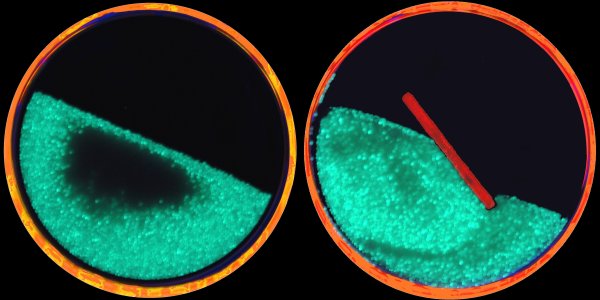
ACS PRF | ACS
All e-Annual Reports

43877-AC9
Macroparticle Self-(de)Assembly: Using Janus Beads to Control Cohesive Mixing/Segregation of Fine Particles
The current research project continues our focus on methods to enhance particle processing through control and/or minimization of de-mixing effects. In a recent Physical Review Letters paper, we show both experimentally and computationally how to use periodic flow perturbations to eliminate segregation of any type in free-surface dominated flows. Segregation, or de-mixing, of particles has been a topic of intense research and industrial frustration for many decades, causing dramatic revenue loss and product failure in fields as varied as ceramics, pharmaceuticals, mining, and agriculture. The crux of our technique relies on identifying two critical features of segregation: 1) that it has a preferred direction and 2) it takes a finite amount of time. In order to exploit these two observations one must perturb the flow faster than a (theoretically identified) critical frequency, essentially making segregation act as if it were "in a hamster wheel", accomplishing nothing. Interestingly, mixing -- being primarily random -- is not affected by these perturbations. This paper has been recognized by a recent Perspectives article in Science and an similar upcoming article in Powder Technology. This recognition is due to the method's potential to not only impact industrial practice, but also change the way that academics think of attacking segregation problems. As the project continues we will shift our focus back toward cohesive systems, in particular, looking at van der Waals dominated granular materials.

Placing a single baffle near the axis of rotation of a tumbler-type mixer not only reduces the uninterrupted flow length of the free-surface material (lowering the time to segregate), but also reorients the flow prior to its next pass through the layer (changing the effective direction of segregation).